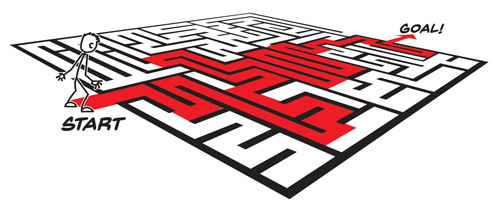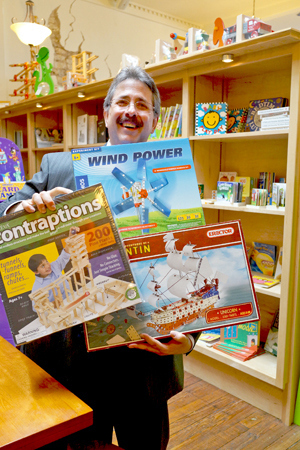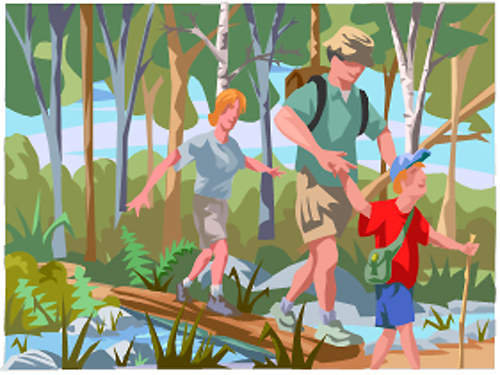Don M. Winn's Blog, page 25
October 16, 2014
Are There Advantages to Being Dyslexic?
 I’ve often written in this blog about the challenges dyslexics face, especially when learning to read and write, but today I thought I would talk about the positive side of dyslexia. Being dyslexic myself, it’s sometimes hard to remember that there are positive points about dyslexia, especially when everyday activities like reading and writing are such an ongoing challenge. However, along with the challenges that dyslexics face, we also have a few strengths that are part and parcel of the deal. It’s worth considering a few of those here.
I’ve often written in this blog about the challenges dyslexics face, especially when learning to read and write, but today I thought I would talk about the positive side of dyslexia. Being dyslexic myself, it’s sometimes hard to remember that there are positive points about dyslexia, especially when everyday activities like reading and writing are such an ongoing challenge. However, along with the challenges that dyslexics face, we also have a few strengths that are part and parcel of the deal. It’s worth considering a few of those here.
Something I’ve noticed about myself is the ability to quickly and easily recognize patterns. I can generally spot when something is out of place or doesn’t belong. I’m also a big picture thinker which has served me well in managing software projects and in troubleshooting complex problems. I never realized that I probably owe those strengths to being dyslexic until I read a recent article in Scientific American about the advantages of dyslexia.
Matthew H. Schneps is an astrophysicist with dyslexia who founded the Laboratory for Visual Learning. Its goal is to study the consequences of cognitive diversity on learning. He observes that dyslexics, though laborious readers, have the fastest rates of spotting visual representations of causal reasoning. In other words, dyslexics show a marked ability to quickly spot pattern deviations, for example, seeing the weeds among the garden’s flowers. His lab has tested both dyslexics and non-dyslexics on things like spotting black holes and memorizing blurry images resembling x-rays. Dyslexics blow the competition out of the water.
Why? There is still no definite answer, but there are a couple of possibilities.
One possibility is that dyslexics have trouble managing visual attention. While this is certainly not conducive to reading well, it can be a strength in certain situations. Schneps offers the illustration of a security guard. The most effective guard will be skilled at spotting suspicious actions or patterns that alert him to danger, in effect watching an entire scene at once. Reading, in contrast, requires tiny regimented eye movements that narrow one’s field of vision. The dyslexic—although having difficulty narrowing his field of vision for reading—would be better able to see the big picture and identify anomalies in this example.
Testing reveals that people with dyslexia can distribute their attention far more broadly than typical readers do. For example, many dyslexic people are found to have an increased ability to “pick out more words spoken by voices widely-distributed in the room” from a cacophonous background, such as a noisy cocktail party.
When test participants were charged with discerning which drawings displayed impossible images, such as “Escher-esque” drawings, versus those that did not defy logic, the dyslexic participants again trumped the non-dyslexics. They identified the visual logic flaws far more quickly than non-dyslexic test subject. The dyslexic participants saw the entire image at once, rather than “reading” the image in small fragments.
Dyslexics are becoming recognized as big picture people. Is it any wonder that many business entrepreneurs, scientists, tech talents, mathematicians, and physicists are dyslexic?
Takeaway: Every child, dyslexic or not, has strengths and weaknesses. But for the dyslexic child it’s often only the weaknesses that are noticed. Left unchallenged, this view will not only impede academic advancement but it can also leave deep emotional scars. It’s important to help the child to see his strengths as a big-picture thinker, and to work with educators to create a learning environment where such strengths will be appreciated and nurtured.


October 9, 2014
Helping the At-Risk Reader by Fostering the Love of Story
I recently gave a presentation at the Region XIII Library and Literacy Summit in Austin, Texas, about how to help at-risk dyslexic readers by fostering students’ love of story.
It’s human nature to avoid doing things that are either difficult or just plain monotonous. This is especially true of children. I had whole lists of things that I didn’t like to do when I was boy, mostly because they were boring or repetitive. But there were also things I didn’t like to do because they were such a struggle for me—and that included reading and writing.
As a child with dyslexia, reading was never enjoyable and writing was even worse, mainly because it took so much effort and nervous energy for me to try to read and write. At times it was devastating. It seemed so pointless to subject myself to that painful effort day after day, when I never seemed to make progress like my fellow students.
But what most children don’t generally comprehend (I certainly didn’t) is that we don’t learn to read just for the sake of reading. First we learn to read, and then for the rest of our lives we read to learn.
Reading not only opens up our main avenue of learning—it also opens up a world of adventures through stories that teach us about life, help us recognize ourselves and our place in the world, and solidify abstract concepts.
Motivating the miserable dyslexic reader goes beyond just teaching the mechanics of 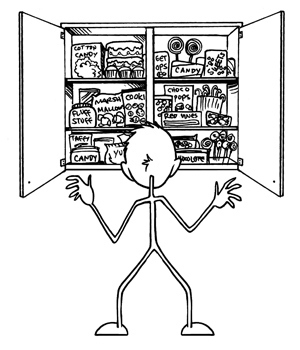 reading. The mechanical act of reading will never be fun or easy for the dyslexic student. Instead, parents and teachers need to foster a love of story in children. Since there is always a mechanical stress to reading, the goal is to separate the love of story from the stress.
reading. The mechanical act of reading will never be fun or easy for the dyslexic student. Instead, parents and teachers need to foster a love of story in children. Since there is always a mechanical stress to reading, the goal is to separate the love of story from the stress.
Picture a locked glass cabinet filled with all of your favorite desserts. If you want those tasty treats badly enough, you’ll work at unlocking the barrier until you reach your goal. You have to see beyond the lock, beyond the struggle, beyond your lack of tools to the end result. This will motivate you to put forth the needed effort.
So what are some ways that parents and educators can help foster a love of story?
Invoke a child’s identity as a reader: reframe the statement “it’s time to read” as “let’s be readers” to get these struggling students to begin thinking of themselves as the readers they are. (For more info, see my blog about using word choice to motivate struggling students.)
Provide children with materials and prompts to draw illustrations depicting story
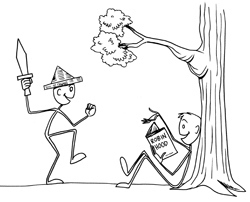 ideas.
ideas.Encourage children to make up their own plays and dramas based on beloved characters.
Read and/or listen to stories together regularly.
Ask the child to describe what they see in pictures in books, and have them guess what will happen next.
Develop questions around the main characters that the child can fill in from their own imagination: What would this character’s room look like, and why? What would his favorite hobby be? What is he most afraid of? What is he most proud of? Why?
Discuss ways the child may be like a character in a beloved book. Do they share feelings or experiences? Is there common ground in talents or gifts? Help the child to see that he or she is part of a much greater world, and that reading about the experiences of others helps us learn about ourselves.
Assignments like these help children use their own imaginations to become participants in the story. By helping them to imagine and enjoy the “worlds behind the words,” children can learn to see that the reward of reading is worth the extra work.


October 2, 2014
Stigmatization and Bullying – What’s the Connection?
stig’ ma: (archaic) a mark burned into the skin of a criminal or slave, a brand
stigmatization: being marked or regarded as different in a negative way
Earlier this year, at the Pediatric Academic Societies Annual Meeting in Vancouver, British Columbia, the entire program was devoted to the subject of stigmatization, bullying, and children’s mental health. Why? Because increasing evidence points to the fact that stigma—whether due to a child’s race, religion, weight, size, family income, learning challenge, or any other attribute—is the root of bullying, and it can cause considerable harm to a child’s mental health.
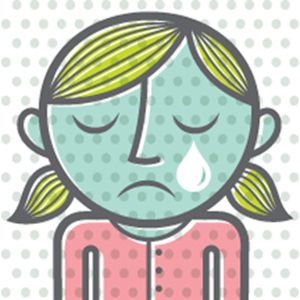 Many can identify with the low self-esteem and feelings of worthlessness that come from feeling different from others. Nearly all children have painful moments when they wonder if they’re really ok, since they perceive their differences as a sort of “wrong-ness.” What if the child likes things other kids scorn? What if they’re shorter or taller, smaller or bigger, or struggle to learn what seems to come easily to everyone else? What if they feel like they will never fit in?
Many can identify with the low self-esteem and feelings of worthlessness that come from feeling different from others. Nearly all children have painful moments when they wonder if they’re really ok, since they perceive their differences as a sort of “wrong-ness.” What if the child likes things other kids scorn? What if they’re shorter or taller, smaller or bigger, or struggle to learn what seems to come easily to everyone else? What if they feel like they will never fit in?
Bullies are quick to notice these differences. Like hounds to the hunt, bullies are quick to sniff out these insecurities and expose them to the world. A vicious cycle ensues. The child already feels “less-than,” and projects that belief either non-verbally or through negative statements about themselves. When a peer chooses to victimize that child, he or she has their worst fears confirmed via bullying in any of its many forms, including cyber-bullying. The more a child has amplified outside validation of their perceived negative features or worth, the bigger a target they become. The cycle continues.
In this situation, differences are considered as a sort of justification to judge, isolate, reject, or ostracize, those who look, think, or behave differently than others. Stigmatization—the unfavorable marking or setting apart of those who are different from the perceived norm—is one of the last great prejudices, and as such, it is a learned behavior.
When toddlers from different races, socioeconomic backgrounds, body types, or abilities are put together in a play area or learning environment, there are no stigmas or exclusions made by these very young humans. Indeed, young ones seem very curious and compassionate towards those who may have impairments in movement or vocalization, and are quite willing to accept and accommodate the different individual as they are into the group. As witnesses of this phenomenon, we are reminded that kindness and compassion are a part of the true inner nature, even the essence, of our basic humanity. But over time this innocence and gentle curiosity can be conditioned out of growing children. And, sadly, it often has been.
What can we do? Here are a few take-away ideas to consider.
Have regular, warm dialog with your child. Find out what’s on their mind, what they’re afraid of. Take this time to discover what they are thinking about themselves, and what beliefs about themselves they are forming in their young minds that may need redirecting. (See my earlier post on how our words can heal and encourage.)
Model kindness and compassion. Kids imitate what they see. Strive to minimize critical or biased remarks and attitudes at home—even remarks you make about yourself.
Model empathy. When out and about with the family, and public examples of “different-ness” are observed, ask questions to get your kids to put themselves in the shoes of that homeless person, or the blind man with a guide dog, or the person in a wheelchair. Encourage them to use their powerful imagination to envision what it would be like to live under those circumstances. How would life be different? How hard would it be to feel like a worthwhile person in spite of those differences? How would they do so?
Create an environment where your child has reinforcement of their positive nature and efforts. Have they picked up their socks, done homework, set the table, said something kind or insightful that demonstrates compassion? Recognize them for it. Tell them how proud you are of them, and not just for the things they do, but for who they are.


September 25, 2014
A Great Place for Kids and Their Parents Too!
Probably everyone reading this blog has a fond memory of a special toy from their childhood. I certainly do. I was particularly fond of toy cars and trucks but my dearest toys were any that involved constructing something. I remember being fascinated by building things with an erector set. However, toys have changed a lot since I was a child.
As an adult, I rarely see any toys that even vaguely remind me of my childhood. But all that changed a couple of years ago when I walked into a new store on the square in Georgetown, Texas, called All Things Kids. I had a hard time leaving the store without buying everything. Their toys are beautifully crafted and designed to engage a child’s imagination. And yes, they have a huge selection of erector sets and numerous other toys that involve constructing something. I fell in love instantly.
I also enjoyed getting acquainted with owners Christian and Karen Soeffker and their son Carl. (In case you’re wondering, they do carry all of the Cardboard Box Adventures books—yet another reason to enjoy this store!) Since my initial meeting with the Soeffker’s they’ve opened a second All Things Kids location in Austin at the Domain and plan to open a third location soon in Lakeway. It looks like I’m not the only one that’s fallen in love with their store.
All Things Kids is too good of a place to keep to myself so I wanted to take the time to introduce you to Christian, Karen, and Carl and to show you why I think All Things Kids is probably the best toy store for kids and their parents today. So to kick things off Christian and Karen have kindly agreed to answer a few questions for this blog
How did All Things Kids get its start?
When we relocated to the US 8 years ago, we had a 1-year-old son who was ready to learn and play. As first-time parents, we were shocked at the quality of toys out there—mass produced, whirring, battery-driven, noisy plastic toys that play with children instead of the other way around. We quickly called relatives in Europe to send us real, educational, and beautiful wooden toys for our son. He loved them, we loved them, and so did our friends who asked if we could order some for their children. Within 2 short years, our house had turned into a toy warehouse and we were selling European toys online. Now we have 2 brick and mortar stores and we are franchising our concept so that we can have All Things Kids stores throughout the US.
How do you go about selecting the toys you will carry in your store?
Our unique collection of exceptional toys and books are selected for their quality and use of natural materials as well as educational and play value. As parents, we have set high standards for our son’s personal toy and book collection – we have hand-picked our lines accordingly and are particularly impressed by toys and books that have been endorsed by awards and organizations such as Caldecott, Newbery Medal, Parent’s Choice, Oppenheim and Mensa.
We always stay true to our concept motto, which is painted on the wall of our Domain store:
“The most effective kind of education is that
a child should play amongst lovely things”
~ Plato
Do you test them out first? (And how fun is that!)
Absolutely! Our now 9-year-old son has carried the title “Vice President of Product Testing” for the past 7 years. He knows each toy, has played with them, shares them with his friends for research purposes and even has a video blog called Carl’s Corner where he talks about some of his favorite toys.
In addition to this, everybody who comes into our store is a product tester too. Our toys and games are all available to play with in the Play Zone, where parents can see which toys their children like playing with or simply enjoy an afternoon of games and giggles.
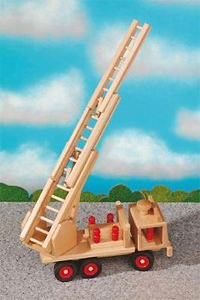 Do you have a favorite toy?
Do you have a favorite toy?
We each have our own favorite toy but the one toy that is most significant and memorable to all three of us is the wooden fire truck from Fagus of Germany. This was the very first wooden toy sent from Grandmother in Germany for our 1 year old, it symbolizes how our story began and at the same time represents our mission statement to provide only the best toys from around the world.
What other activities do you offer for kids?
Our Playzone has turned into a busy activity hub! During the week we offer story time twice a week, art activities for toddlers as well as structured classes for Pre-K children such as Music, Sign Language, and even foreign languages such as Hindi Play Group on Saturdays.
We also have a 12 week summer class schedule every year, birthday parties on weekends and magic shows and face painters during events. Our most popular event though is Parent’s Time Out—every Saturday we team up with NannyPoppinz of Austin who provide us with trained and certified childcare providers to help us with babysitting. Parents can leave their kids with us for a few hours so that they can enjoy a date night or a movie. This service is available every Saturday night from 6 – 10pm for $5 per hour (potty trained children only).

The All Things Kids website has a great calendar that shows everything that’s going on at both locations.
All Things Kids ~ Exceptional Toys, Books & Events
Small Business Of The Year 2012 (Georgetown Chamber Of Commerce)
Best Texas Downtown Business 2013 (Texas Downtown Association)
On The Square, Georgetown, Texas
At The Domain, Austin, Texas
http://www.allthingskidsusa.com/
www.facebook.com/AllThingsKidsInGeorgetownTexas
And just so I won’t feel left out, here are a few of the toys I would have LOVED to play with when I was a kid.


September 11, 2014
Medieval Medicine and First Aid
I am hard at work on my soon-to-be-released middle grade chapter book The Lost Castle Treasure, the second book in the Sir Kaye series. I’ve also begun coordinating with illustrator Dave Allred to map out possible pictures for the book. In one of the scenes young Sir Kaye is “accidentally” tripped (by a not-so-nice knight) and on his way down he ends up with a black eye and cuts from broken glass. This of course requires some minor first aid, which reminded me a lot of my childhood. But what would a medieval mom do to patch up an injured child?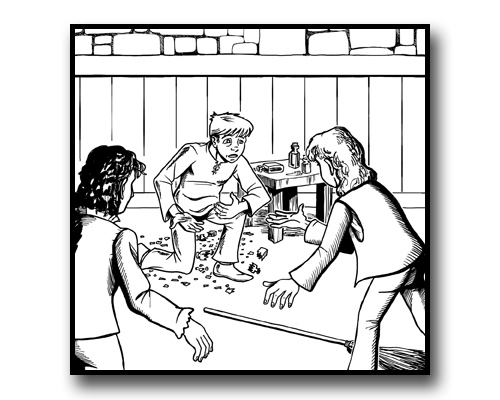
I began researching first aid and medical care in medieval times, and thought I’d share some of the things I’ve learned with my blog readers. To help me out, Kathy Kerr, a licensed acupuncturist and herbalist in Georgetown, Texas, and a former member of the Society for Creative Anachronism (a medieval re-enactment group) has graciously agreed to answer a few questions on medieval medicine.
1) What was basic first aid like in medieval times (minor cuts and bruises)?
Common first aid practices included washing with whatever was handy, including (sometimes dirty) water, beer, wine, vinegar and other common drinks. Minor cuts might be smeared with honey (it is now known to have strong antibiotic properties) or have soothing poultices applied made from local herbs and mints. Usually minor injuries were left alone.
2) How did they treat severe injuries like major wounds and broken bones?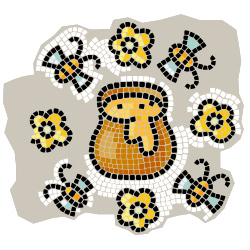
Major wounds—flooding with water or vinegar (see above), packing with herbs and poultices, then wrapping in strips of cloth. Ligation (sewing) of the wound was not unknown, and was practiced with regular sewing thread before the invention of cat gut. Honey, again, might be smeared onto the wound. Cautery was sometimes used to seal wounds and stop bleeding, especially after amputation.
Broken bones—bone setting was an art practiced through generations. Sometimes a Barber-Surgeon did bone setting, but most often it was an art unto itself. If broken bones were not properly set, infection could set in and cause early death (King Tut is one example, and possibly Henry VIII with his never-healed jousting wound). A bonesetter would carefully palpate the area first to size up the situation and then draw and pull the limb to align the bones. Then the broken limb would be wrapped in flannel strips and sometimes packed in comfrey paste (which formed a hard cast when dried) or casted with dried muds.
3) How did they treat infections from a simple sore throat to a major flu?
Local herb lore was used to find herbs to make a soothing tea or lozenge in most cases. Common ingredients were mint, licorice root, willow-tree bark (the basis for modern aspirin) and others depending on the area and time of year. Unfortunately, it was common to treat fevers as a “chill” and smother the patient in blankets in a stuffy room with a hot fire in the grate. Many died of dehydration. Leeches were sometimes used to draw the “evil humours” from the patient’s body. Blood-letting was also used to treat fevers. The instrument used to draw the blood was called a fleam, and it is commonly seen today on many medical symbols. There are some amazing pictures of medieval medical instruments and information here.
4) What did they do for dental care?
Barber-Surgeons would extract rotten teeth by first wiggling them loose and then pulling them out with plier-looking forceps. Otherwise, people would clean their teeth and try to freshen breath by chewing herbs like peppermint and rosemary, rinsing the mouth with vinegar or a solution made of herbs, and rubbing the teeth with coarse material like cheesecloth. They also used twigs as toothpicks.
5) What common medicines would you find in your average medieval home?
How about the wealthy?
Herbs were the main choice for treating illness. People used these herbs to make tinctures, poultices and drinks. Henbane was known to help joint pain when applied topically, mint  for stomach aches and many other things, including snakebite. Dandelion was also used for snakebite. Horehound was not unknown and was used for cough and sore throat when mixed with honey. The rich might have access to the amazing foreign plant tobacco which was thought to cure plague. Mustard, garlic, onion and grease plasters might also be used on chest illnesses. Enemas were not uncommon, because bowel problems were abundant due to improper diet.
for stomach aches and many other things, including snakebite. Dandelion was also used for snakebite. Horehound was not unknown and was used for cough and sore throat when mixed with honey. The rich might have access to the amazing foreign plant tobacco which was thought to cure plague. Mustard, garlic, onion and grease plasters might also be used on chest illnesses. Enemas were not uncommon, because bowel problems were abundant due to improper diet.
6) What medieval medicines/treatments are still used today?
Honey is still used today for its antibiotic properties, as are garlic and onion. Mint is a common soothing tea, as is chamomile. Horehound is still common in lozenges for sore throat. Willow bark was distilled into aspirin. Almost all the herbs used then are used now, whether in original or distilled forms.
7) Anything else you’d like to share about medieval medicine?
We’ve moved away from leeches, but they are actually coming back and being used in some post-surgical bleeding cases. Maggots are also used in cases of necrosis, although they weren’t really used medicinally in the past. Cautery is still used, but it’s laser or electric now, and painless. Bone setting is done surgically for the most part, but of course casting broken bones is still in common use, as are slings. A lot what was old is still with us.
Some helpful links for reading about ancient medicine:
http://cadw.wales.gov.uk/docs/cadw/publications/Health.pdf
http://www.discoveriesinmedicine.com/Enz-Ho/Fractures-Treatments-and-Devices.html
http://www.bbc.co.uk/bitesize/ks3/history/uk_through_time/medicine_through_time/revision/3/


August 28, 2014
Harmony School Author Visit May 2014
During the 2014 school year, Mrs. Leslie Lindsay, a teacher at Harmony School of Science in Austin, incorporated my book, The Knighting of Sir Kaye, as part of her ESL classes’ semester reading project. Students read weekly assignments from the book and listened along with the audio version. Later they discussed each week’s assignment in class.
In addition, the class had activities based on classroom support materials available for teachers and students on my website. This included some excellent work on the Sir Kaye coloring sheets, which may not sound like a big deal, but since the illustrations in my book are in black and white, I really enjoyed seeing the color added to them!
At the end of the semester, I visited each of the ESL classes to do a Q&A with the students, wrapping up every classroom visit with a Sir Kaye trivia contest. I thoroughly enjoyed the time I spent with the students at Harmony School and think they had a great time too. Below are a few photos from my visit and also an enthusiastic review from Leslie that she posted on Amazon.com for The Knighting of Sir Kaye. I’m looking forward to returning next year to talk about the second Sir Kaye book in the series, The Lost Castle Treasure, which will be completed this fall.
For those that would like to take a (medieval-style) stab at it, I’ve included the Sir Kaye trivia questions below.
Mrs. Lindsay’s Amazon.com Sir Kaye Review
I teach ESL Classes for students learning English, and my 6th, 7th, and 8th Grade students loved this book. We read a few chapters a week, discussed them, listened to some chapters on audiobook, and did various comprehension activities. I got in contact with the author Don Winn, and he sent me special coloring sheets from various scenes in the story, and as a culminating event he came out to the school and we had a spectacular “Author Question and Answer Session” which was personalized for each grade level. It was a great experience for the students to meet a published author and ask questions about the book, as well as questions about what being an author is like. I’m sure the students will remember this visit for a long time.
About The Knighting of Sir Kaye
Sir Kaye Trivia Questions
Level One – Easy Trivia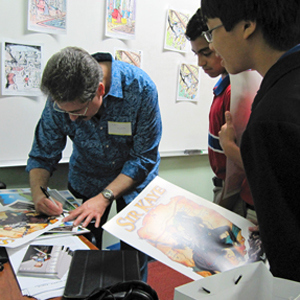
What does Reggie lose toward the
beginning of the story?
What is Kaye’s Father’s name?
Does Reggie have any siblings?
Does Kaye have any siblings?
What is the name of Kaye’s village bully?
What animal ends up as the village
bully’s pet?
What name did Charles give the wolf that
he found?
What is Reggie’s favorite food?
Level Two – Medium Trivia
What is the name of the woods the boys explore?
What country is Queen Vianne’s homeland?
What is the name of the queen’s lady in waiting?
What is the real name of Meg’s (Kaye’s little sister’s) horse?
What do Kaye and Reggie find in the village bully’s hideout?
Who is Sir Gregory?
Level Three – Hard Trivia
What did Reggie call Charles’ secret hideout?
What does Kaye tell Reggie the name Kadar means?
What is a tourtelete?
What did Kaye and Reggie call the gang that kidnapped Beau?
What is Charles’ mother’s name?
Level Four – Thinking Questions
What is chivalry?
Why did Charles stop being Kaye’s best friend and start being mean to him?
Why did the queen make a twelve-year-old boy into a knight?
Good friends help each other and learn from each other. Do you think Reggie learned anything from Kaye? What? Do you think Kaye learned anything from Reggie? What?
What do you think is going on in Eldridge that Kaye’s father is so worried about?
If you’d like the answers to any of these questions, let me know!


August 14, 2014
Firebug and Firebug Junior: Why Share Your Childhood Mistakes?
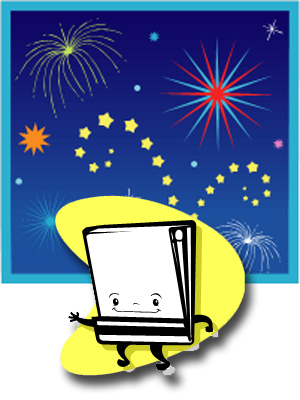 A pre-story warning: Please do not try any of the “scientific” experiments you read about in this blog at home. Bad things will happen.
A pre-story warning: Please do not try any of the “scientific” experiments you read about in this blog at home. Bad things will happen.
When I was 7 years old my best friend Jerry lived next door. Our neighborhood was perfect. It had wide streets for bike riding, fruit trees for quick snacks, a nearby clubhouse with ping pong tables, a pond, and a big field surrounding it that was always fun to explore.
One fine summer day we discovered some discarded fireworks in the field.
Like most kids, Jerry and I were enthralled by fire. Of course, fire was forbidden. That was part of the attraction. But beyond that, the mystery of flame, mesmerizing and colorful, transfixed my gaze at every candle, campfire, and hearthside. In a strange way that I lacked the words to express at the time, I felt a kinship to humanity going all the way back to the dawn of mankind whenever I looked at fire.
But let’s get back to those fireworks. They had been discarded for a reason. They were very, very old. But Jerry and I were not discouraged in the least from performing certain—ahem—scientific experiments with those fireworks.
The field by the pond was our laboratory. Matches were easy to find at any mantelpiece, patio grill, or kitchen. Off we ran to get the needed supplies and quickly regrouped to begin the experiment.
Again and again, we’d strike a match, hold it to a fuse, and toss our projectile into the field. But none of them would light. Rats! A bunch of duds! We weren’t rewarded for our efforts with exciting, colorful explosions. None of those firecrackers managed more than a halfhearted smolder.
Enter the first lesson about fire: smoldering projectile + tinder dry summer field = bad combination.
Smoke began rising from the field. Within seconds of noticing the smoke, we saw small tongues of flame.
An immediate confab was in order. What could we do?! I had a brilliant idea. We could smother it with cardboard! We ran home with panicked, winged feet, rummaging through our garages for old pieces of cardboard.
Back at the field, we learned our second lesson about fire: unattended fires spread, and spread like—well, like wildfire.
Desperately flapping the sheets of clumsy cardboard at the ground, the flames only grew larger. Ack! This wasn’t going well. Although Jerry and I were both fire savvy (we thought), knowing that fire required fuel and oxygen, we had yet to understand the finer points of that principle. Since the fire had extended to a size larger than the footprint of our cardboard, we weren’t smothering it, we were only adding more oxygen.
Lesson three: adding oxygen to a fire causes it to spread even more. Bad idea.
Another quick confab. Water! That was the remedy! We shoulda thoughta that first! Another mad dash home for buckets. We filled a watering can and a bucket at the backyard spigot and applied their contents to the blaze. It was like trying to pay the national debt with nickels.
By now, our firecracker adventure was a full-fledged wildfire, and at that point, there remained only one option—full retreat, and every man for himself.
Within minutes, I was hiding under my bed. I assume Jerry was similarly camouflaged. Great minds think alike that way.
I will be forever grateful for the firemen whose sirens I heard shortly thereafter. They saved the day, and probably the neighborhood too. After that, Jerry and I never risked any more fire situations.
Funnily enough, as all adults eventually learn, life has a sense of humor. And by that I mean that when I became a parent, it was unsettling to learn that my own son was also a devotee of the flame.
After my wife and I discovered several piles of torched toilet paper in our house, we attempted to redirect our son’s behavior (or so we thought). Quite some months passed without incident, but unbeknownst to us, our son had figured out that lighting squares of TP over the open toilet bowl would both conceal his hobby and safely snuff out the flames as well. Safety first and all that.
Imagine our surprise one day as we apprehensively followed our noses only to locate the singed, blackened, and blistered surface of the toilet seat in the hall bathroom. Oops.
At this point I saw the wisdom in sharing my own fire experiences with my son. It did the trick, and we never had any more problems after that.
While we would love to be perfect, and love it even more if our kids viewed us as such, being willing to share our mistakes and the lessons we’ve learned from them is an important part of parenting. Not only do they benefit from our object lessons, but we model vulnerability, honesty, and responsibility through that sharing.
What life experiences have you shared with your kids? I’d love to hear from you.


July 31, 2014
Our Words Can Heal and Encourage
I’ve been working on a presentation for educators about working with dyslexic kids and other students who struggle academically. It’s brought back so many memories of my own struggles with reading and writing and recalled my childhood fears that I was far different (and less than) my fellow students. That’s why a recent blog from Hands Free Mama resonated with me so much.
Her conversation with her young daughter started because her daughter was feeling different and unusual, and wondered if she was ok. Whether someone has learning challenges or not, the feeling of different-ness can strike any child at any time, and it’s wonderful when a loving parent can step in and reassure a child of his or her value.
Hands Free Mama’s interaction with her daughter sets a beautiful example of how words can heal and encourage even the most vulnerable young ones. Check out http://www.handsfreemama.com/2014/04/29/children-who-shine-from-within/
Please enjoy!


July 17, 2014
Suffering from Nature-Deficit Disorder?
Do you make a regular effort to spend time outside enjoying nature with your children?
Your kids need your example in this area because they may not have the habit of turning to nature for refreshment and rejuvenation. There has never been a generation raised with such an abundance of technological options for play and entertainment: pads, pods, tablets, phones, e-games, computers, and much more. Even when going for a ride in the car, kids can watch their favorite DVDs instead of looking out the window at the scenery.
Some children may also have limited opportunities to play outdoors because of safety concerns.
As a result, many kids today suffer from Nature-Deficit Disorder, a term coined by author Richard Louv.
The solution? Spend a little time outdoors together. Summer is a great time to get outside with the kids, but for parents who are forced to exist in a techno-centric world for professional purposes it may be difficult to know where to start.
Need some great, affordable ideas to get your children away from technology and outdoors? Look no further. Tiffany of the blog Mommy Goes Green has compiled a great list of resources to help you get the ball rolling. Literally.
Enjoy!


July 10, 2014
A Simple Way to Help Kids Read Sooner
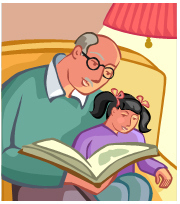 Could one small change in the way parents and teachers read to preschoolers improve a child’s later reading, spelling, and comprehension skills? According to one recent study, the answer is yes.
Could one small change in the way parents and teachers read to preschoolers improve a child’s later reading, spelling, and comprehension skills? According to one recent study, the answer is yes.
As I’ve discussed in this blog before, our brains are hard-wired for speech, but learning to read and write means cracking the code that links all the meaningless (at first) squiggles on a page to the spoken word. The printed word proves to be quite a challenge for many children, especially those who are dyslexic or at risk for future reading difficulties.
Project STAR — which stands for Sit Together And Read — involved 550 at-risk four-year-olds from socioeconomically disadvantaged homes (income under $25,000, and mothers with a high school diploma or less). The students came from 85 classrooms, and each participating teacher was provided with 30 books to use during group reading with the class.
What was the small change in reading technique? While reading to the preschoolers, the teachers specifically pointed out individual letters, words, and capital letters and demonstrated that we read from the top of the page down, and from left to right.
It seems quite simple, even intuitive, doesn’t it? Maybe for adults, but we are already readers. These concepts are new to four year-olds, and helping them become familiar with these patterns of reading before they are able to read makes an impressive difference.
How much of a difference? The follow-ups at 1 year after the program were inspiring: kids who had four sessions of targeted reading per week scored significantly higher on word reading, comprehension, and spelling ability.
Two years after the program, the benefits were still noticeable: kids who had four sessions per week scored over 30% higher on spelling, comprehension, and word reading skills than the control group.
The takeaway here is that by demonstrating how the printed word works to our preschool children, we can help them crack the code and lay a solid foundation for reading that is the cornerstone of education. The sooner our kids can learn to read, the sooner they can read to learn.



